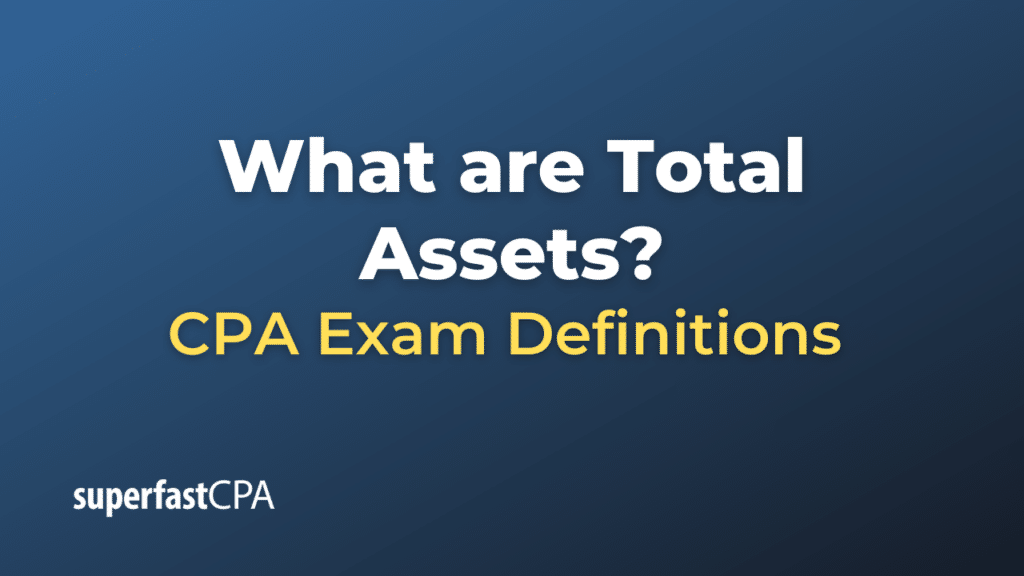Total Assets
Total assets represent everything that a company owns or controls that has economic value. They are the resources that a company uses to operate and generate revenue. In financial accounting, assets are often classified as either current assets or non-current (long-term) assets. The sum of current and non-current assets gives the total assets of a company.
Here’s a brief breakdown of these categories:
- Current Assets: These are short-term assets that are expected to be converted into cash or used up within one year or one operating cycle, whichever is longer. Common current assets include:
- Cash and cash equivalents (e.g., money market accounts)
- Short-term investments
- Accounts receivable (amounts owed by customers)
- Inventory (products ready for sale)
- Prepaid expenses (e.g., insurance premiums paid in advance)
- Non-current Assets (Long-term Assets) : These are assets that are expected to provide value for more than one year. They include:
- Property, Plant, and Equipment (PP&E) : Tangible, long-lived assets used in the operations of the business like buildings, machinery, equipment, and land.
- Intangible Assets: Non-physical assets like patents, trademarks, copyrights, and goodwill.
- Long-term Investments : Investments in bonds, shares, or other companies that are not intended to be sold in the short term.
- Deferred Tax Assets: Taxes that have been paid in advance or will be realized in the future.
- Other Long-term Assets : Items like deposits, long-term prepaid expenses, or any other assets that don’t fit into the other categories and won’t be realized within the next year.
The total assets of a company can be found on its balance sheet, one of the primary financial statements. The formula to determine total assets is:
Total Assets = Current Assets + Non-current Assets
Having a good mix of current and non-current assets is crucial for a company. Current assets ensure that the company can meet its short-term liabilities and operational needs, while non-current assets are essential for long-term growth and sustainability.
Example of Total Assets
Let’s delve into a hypothetical scenario to understand the concept of total assets better.
Scenario: “Gamma Footwear Inc.”
Gamma Footwear Inc. is a company that designs, manufactures, and sells athletic footwear. At the end of the fiscal year, the company compiles its financial statements. Here are the assets Gamma Footwear reported on its balance sheet:
Current Assets:
- Cash and Cash Equivalents: $500,000
- Accounts Receivable: $200,000
- Inventory: $300,000
- Prepaid Rent: $50,000
Non-current Assets:
- Property, Plant, and Equipment (PP&E):
- Buildings: $2,000,000
- Machinery & Equipment: $500,000
- Intangible Assets:
- Trademarks: $150,000
- Goodwill from an acquisition: $300,000
- Long-term Investments: $250,000
Calculation:
Total Current Assets:
Total Current Assets = $500,000 + $200,000 + $300,000 + $50,000 = $1,050,000
Total PP&E:
Total PP&E = $2,000,000 + $500,000 = $2,500,000
Total Intangible Assets:
Total Intangible Assets = $150,000 + $300,000 = $450,000
Total Non-current Assets:
Total Non-current Assets = $2,500,000 + $450,000 + $250,000 = $3,200,000
Total Assets:
Total Assets = $1,050,000 (CurrentAssets) + $3,200,000 (Non−currentAssets) = $4,250,000
Interpretation:
Gamma Footwear Inc. has total assets worth $4,250,000 at the end of the fiscal year. This means, when we sum up everything Gamma Footwear owns or controls with economic value, the total comes to $4.25 million. This gives stakeholders a snapshot of what the company controls in terms of resources that could potentially be used to generate future economic benefits.













